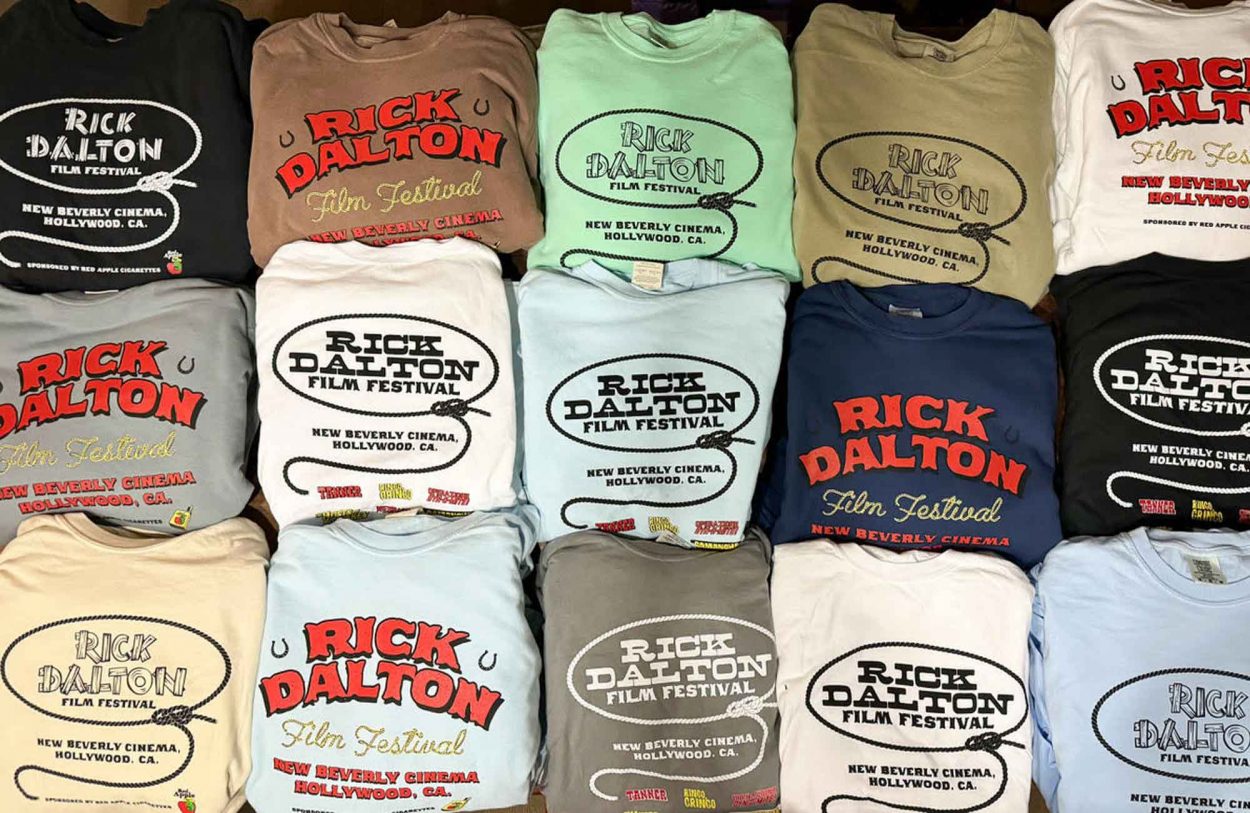Playing more to its shit-kicker Western roots than any creepy bloodsucker fairy tale, Near Dark maintains its position as one of the most groundbreaking horror films made in the last 30 years. Directed and co-written by Kathryn Bigelow, now considered one of the most powerfully creative women in Hollywood, this film brings terror and excitement to the screen while still making ample space for comedy, romance and gore. Bigelow’s distinctive cinematic voice and highly developed casting talent create a lush social landscape that remains dynamic and alive to this day; slightly unusual considering the characters are undead.
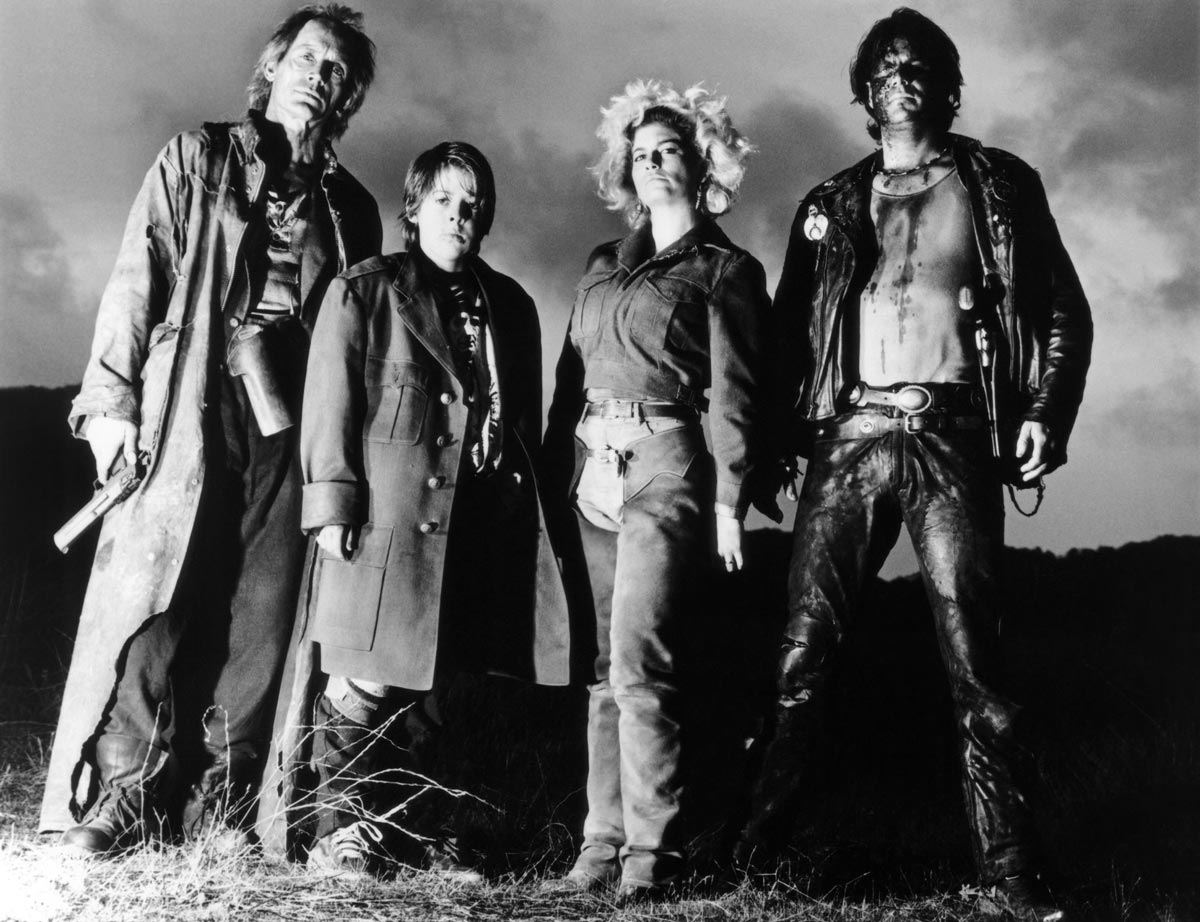
Near Dark may be a movie about people with the tendency to drink blood and need to stay out of direct sunlight, but it is not a “vampire movie.” While certain vampire films may have a decent reputation, it is this author’s opinion that Near Dark can kick all their asses. Twice. Where those films have capes, Near Dark has cowboy boots. Where others take their rest in coffins, these folks go to honky-tonk bars and, er, get extra friendly with the customers. Many vampire films over the years have centered on melancholia, tragedy or sometimes even pure lust; Near Dark operates on the principle of, “To hell with it all! We enjoy being undead!”
For those who enjoy the Fast and Furious films, you may recognize the central themes from that film series in Near Dark: family and loyalty. Not what you might expect in a horror film? Damn skippy. That’s because this work is one of those totally original pieces that seemed to emerge during that weird time of the 1980s when filmmakers like John Carpenter, Kathryn Bigelow, James Cameron and assorted others just said, “Fuck it. Let’s make films that blend it all together.” Westerns and Horror? Why not? Near Dark rocked it. Martial Arts, Westerns and Action? CHECK (Big Trouble in Little China, John Carpenter, 1986). Sci-fi and Action? Let’s go with it (Robocop, Paul Verhoeven, 1987). And too many more to name. This period of time was ripe with brilliant inter-genre films and filmmakers who “got” that these tropes matched each other in ways that filmmakers before and after perhaps never completely identified.
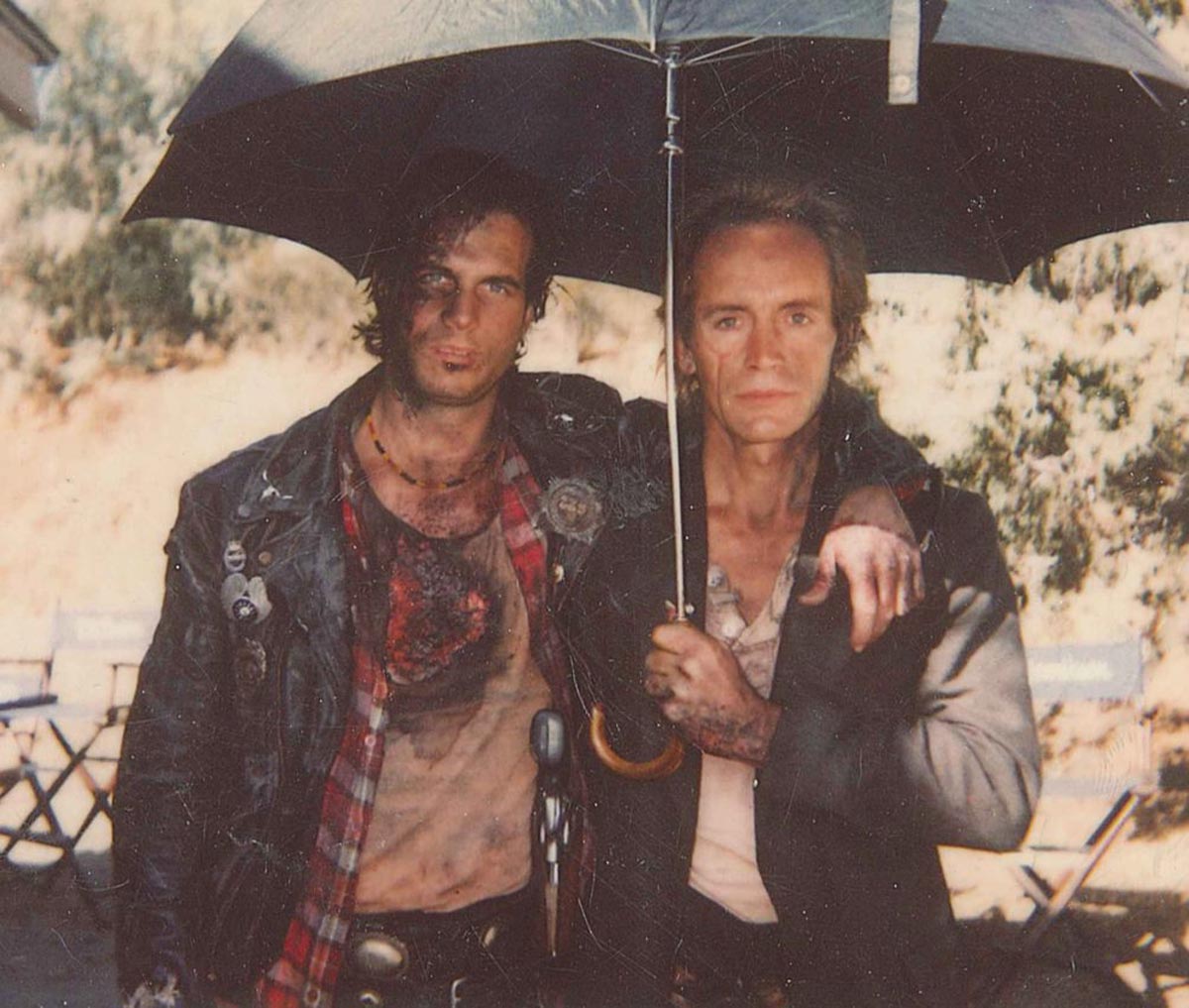
The intermingling of friendship, family and loyalty is Near Dark’s character dynamic. As the film begins, we meet Caleb (Adrian Pasdar). While he has his own familial set-up on a small farm with his dad and sister, it is not the one he becomes part of. After meeting Mae (Jenny Wright), sharing ice cream and participating in some hardcore necking (ifyouknowwhatimean), Caleb is “welcomed” to Mae’s clan. Made up of the leathery, gun-toting Jesse (Lance Henriksen), his tough and sexy partner Diamondback (Jenette Goldstein), the dark-humored and slightly psychotic Severen (Bill Paxton) and a young boy, Homer (Joshua Miller), this group of outcasts serves as each other’s relatives, lovers and friends. Not simply because they are all afflicted by the same “condition” but because they also sensed that beyond the obvious, they were a tribe.
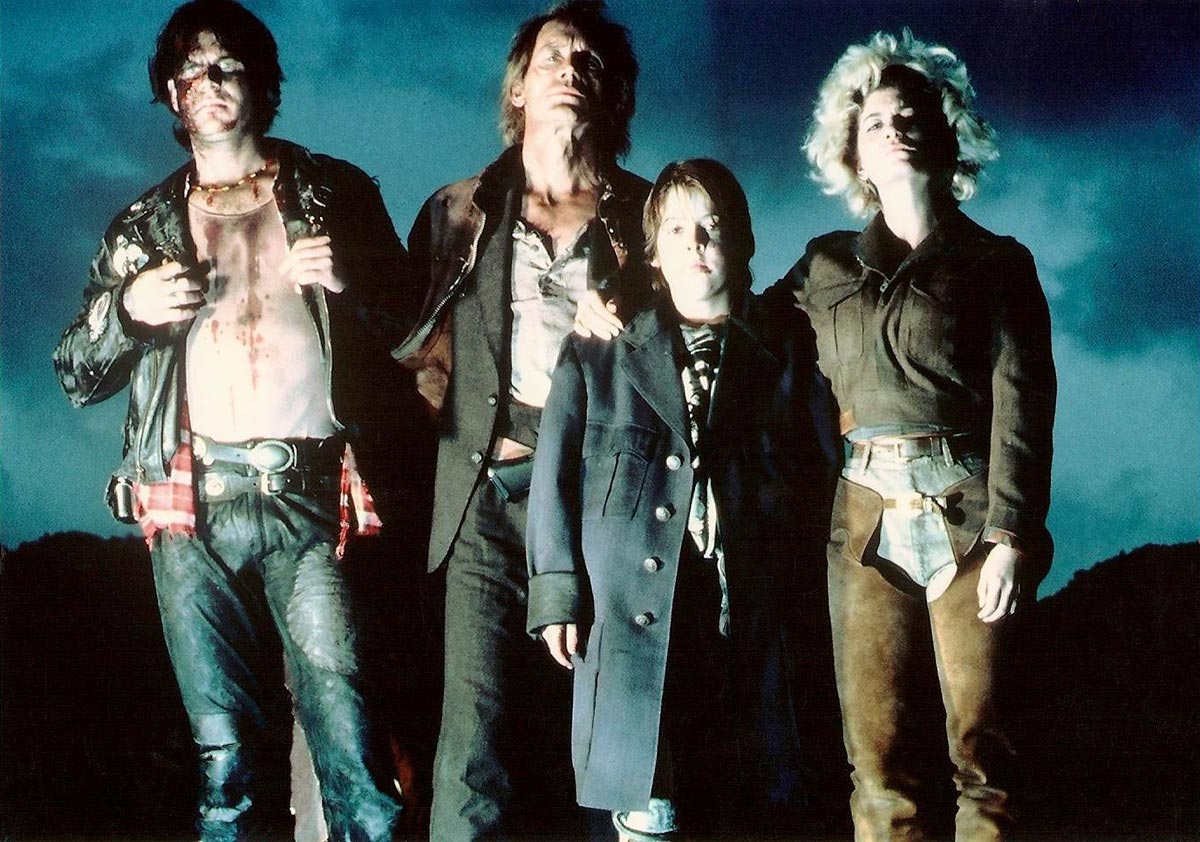
Near Dark does an excellent job in depicting the literal death of the nuclear family: the parents (Jesse and Diamondback) are depicted as looking out for this band of misfits, trying to instill some kind of ethics and moral values in them, even as they kill random innocents for dinner. There’s two brothers: Severen and Homer, older and younger, reacting to their situation in much the way that the prototypical older and younger brother would. Severen gets a kick out of raising hell – he’s the Bad Boy you want to stay away from your daughter. And he loves every minute of it. And Homer … well, Homer just wants to be older and be more grown up. The tragedy in his case is that he never will. Mae is the lovely daughter, with all the bells, whistles and good heartedness that that comes with. So yes – these are all white-picket fence family archetypes. With one major difference: they are all quite dead. Or undead to be more precise.
Bigelow’s referencing of “quintessential American” iconography in a film that generously mixes Western and horror tropes is no accident. The film shatters these conventions and creates new methods of thinking about filmmaking, familial existence, and even femininity. The strong and exciting Diamondback character is strikingly different from the “ladies” of the West or terrified/victimized women in horror. This character builds a whole new woman from the lesser-appreciated women’s roles in these genres. She is part cowgirl, part glorious villainess. Diamondback (and her killer gun belt) should be recognized for the unique and graceful way that she destroyed traditional female stereotypes in this film. Aside from the role that Jenette Goldstein had played just previous to Near Dark, as energetic Private Vasquez in Aliens (James Cameron, 1986), the 1980s were not a time where women got many meaty roles in genre film, and this was certainly one that spoke to women being able to kick ass.
Kick ass is the perfect way to describe actress Jenette Goldstein, on or off-camera. The owner and rockstar of three highly successful shops around the Los Angeles area that specialize in gorgeous lingerie for the full-figured woman (Jenette Bras, “The Alphabet Starts at ‘D’”), Goldstein was kind enough to share some memories and thoughts with me about the experience of making Near Dark and that period of her career.
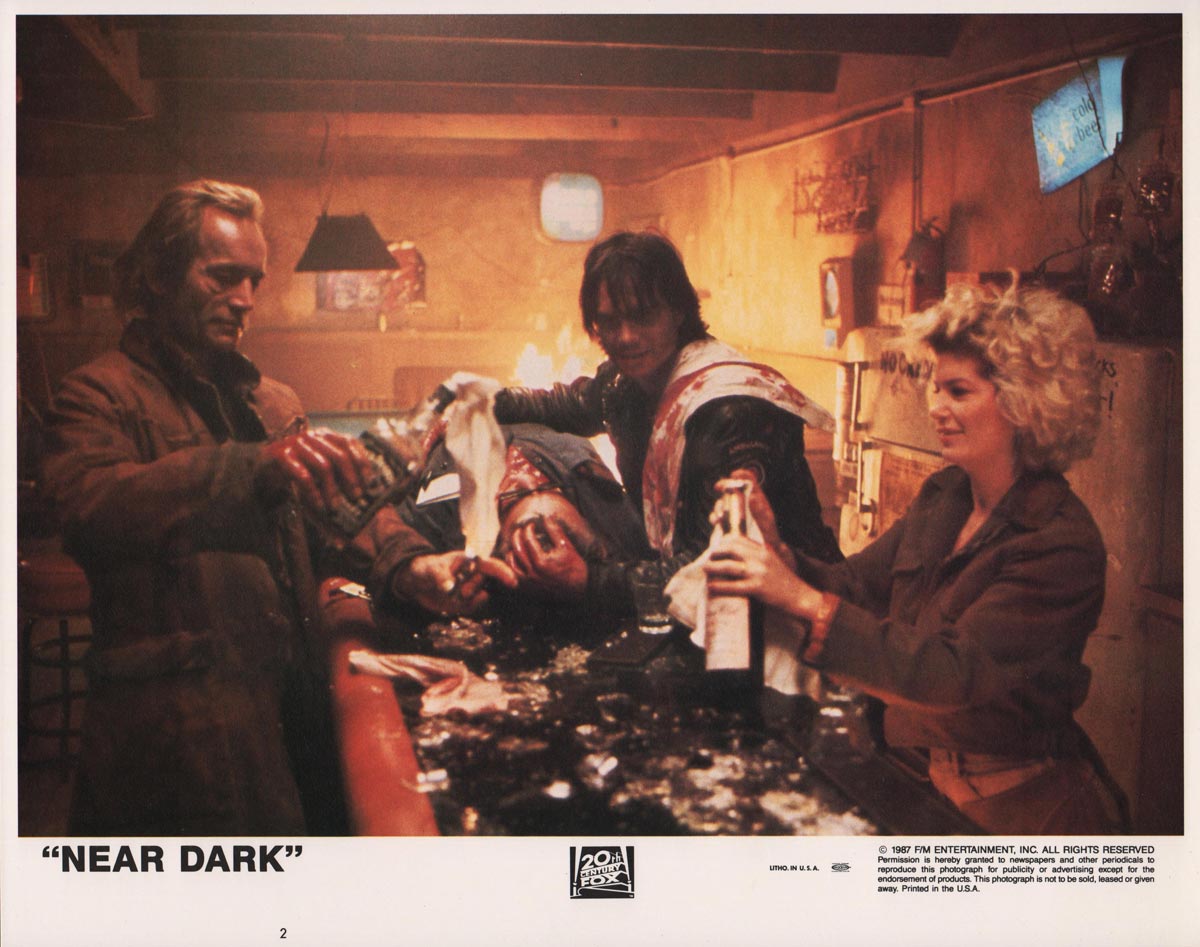
1) This movie was early in your career and had you playing another total badass in a film landscape that wasn’t so full of “actiony” women. Where did you get your inspiration for characters like Diamondback?
Well, you always start with the script. We had long discussions, Lance, Bill, Jenny, Adrian, Kathryn and I. Eric Red was there too. We found clues to when each character was turned. Jesse was Civil War; Severen was Tombstone, a Wyatt Earp type. Bill also put a whole lot of Jim Morrison into that part. He wanted to play Morrison so bad! Diamondback was described in the script as “bleached blond.” I made the whole part from that, actually. It all flashed into my head from that phrase, she was a depression-era girl, Lana Turner in “Postman Always Rings Twice,” bleaching her hair in a tiny bathroom sink. She’s trapped in a life that she’ll do anything to get out of.
Jesse turned Diamondback in the thirties and I turned Homer in the fifties, because I wanted a child. Homer was a “Leave it to Beaver” fifties TV kid. The immortality of the characters allowed us to layer different eras of American culture into one family.
One performance that really marked me for this part (and [my part in] Titanic as well) Gena Rowlands in Gloria, the hair, the Kid, the fierceness to protect the family.
2) This was the second film to pair you up with Lance Henriksen and Bill Paxton. Since Near Dark is a “family movie,” do you have any good family reunion stories or memories to share?
The best one is the start of Near Dark itself. Back in Los Angeles after Aliens I was out at dinner with Lance and Bill and Mark Rolston and a couple others. Bill always loved to complain about the business, and all the terrible offers he was getting, and he brought up this insane vampire/western script he’d just gotten. Lance and I started laughing because we’d been too embarrassed to mention that we’d gotten the same script. We all went around a couple times about our lousy careers and then some one of us commented that the script actually wasn’t bad. Then the other two chimed in to the effect that it was actually pretty good, in fact really good! We all decided to do it that night as a group.
3) This film stands alone in its treatment of a subject that has usually been relatively standard. Much of that is due to the way the actors inhabited their roles. How did Kathryn Bigelow work with you all to create such obvious on-screen chemistry and what (if any) was her role in helping you develop the role of Diamondback?
Of course the three of us had just come off Aliens, and as Bill commented once, we arrived on set with so much unit mojo that it cemented the outsider position of Adrian’s character from the start. The three us of were the core of the outlaw group. Even Mae and Homer betrayed us in the end.
In the beginning Kathryn took us to some empty production offices and said, “Think about the idea of a renegade family on the road, think about those apartments you see with foil covering the windows. Those people are vampires. You wake up and light is coming in. You’ve got a pile of foil, tape and blankets and you’ve got to darken the room as quickly as possible. ‘GO!’”
4) When you were hired for Near Dark, where did you stand on women’s roles in Westerns and Horror pictures? After playing Diamondback, did that change?
I didn’t think about it much. A couple of serious female performances were in my consciousness already, Sissy Spacek and Piper Laurie in Carrie, and Sigourney’s work in the first Alien.
As an actor, you’re aware of the rules of your genre, but it’s really the writer and director who have created the world you’re swimming in. If you’re thinking consciously about making genre gestures, that’s a bad actor as far as I’m concerned.
5) Do you have any special memories about Bill Paxton that you would like to share, since you worked so close with him multiple times
In the last couple of years I kept meeting up with Bill and the rest of the Aliens cast in different cities for Aliens 30th anniversary reunion events. Bill was the one who always had a plan for where we could get dinner together. He seemed to be friends with the owner of a great place in every town.
Bill got so much joy out of life. I remember his glee at getting to play cowboy, spinning the pistols and going, “Bang!” and cracking himself up. I really miss him.
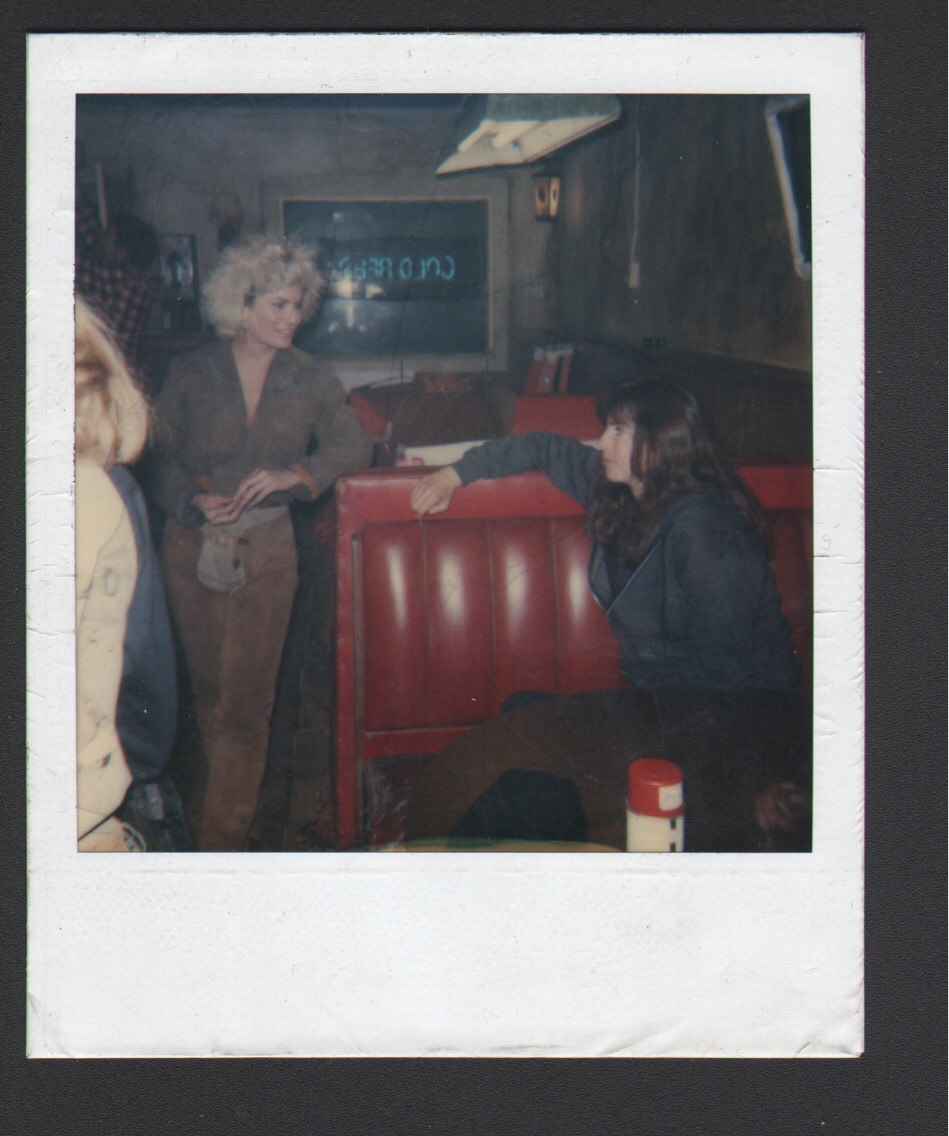 Jenette Goldstein with director Kathryn Bigelow on the set of Near Dark
Jenette Goldstein with director Kathryn Bigelow on the set of Near Dark

